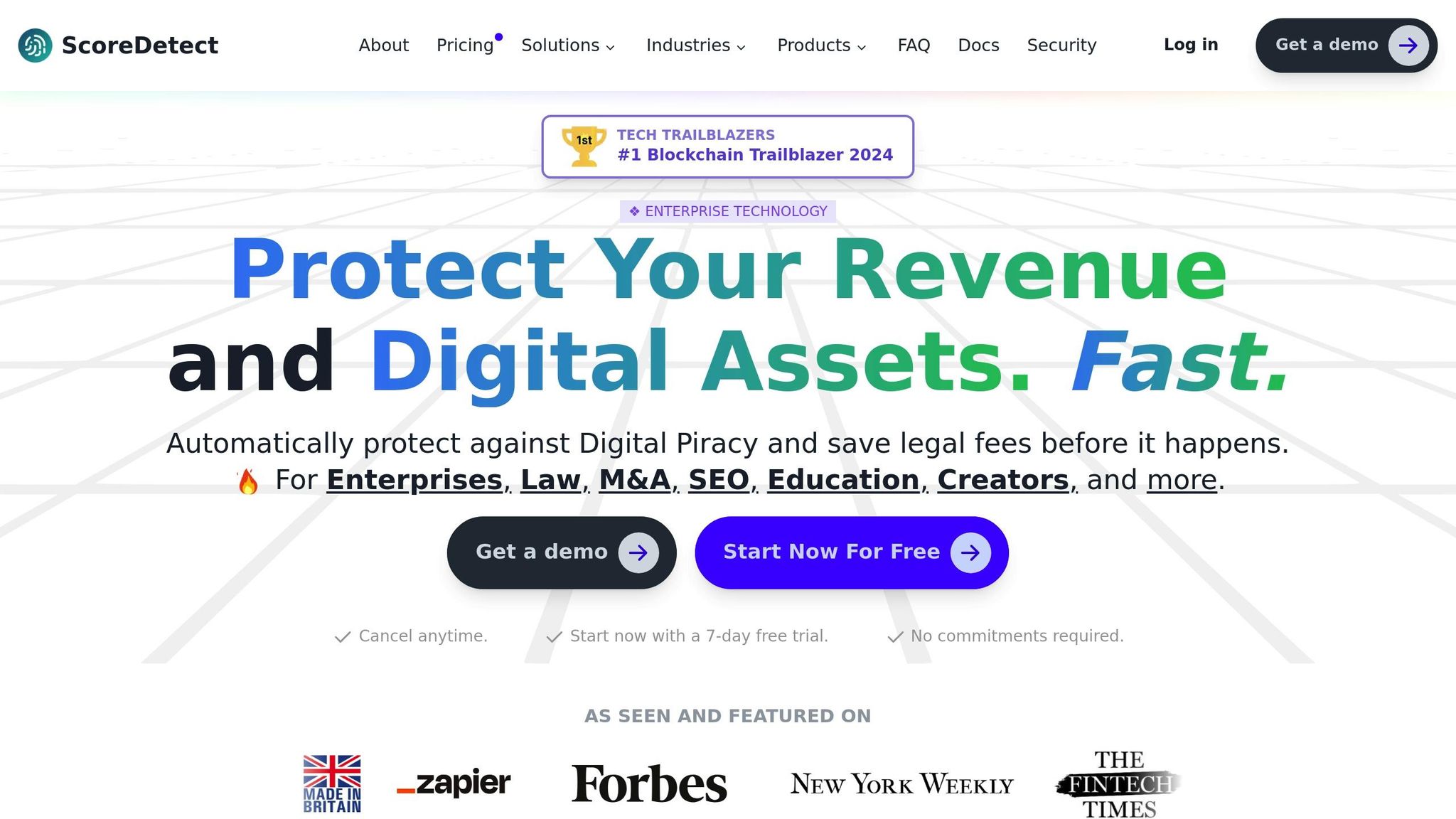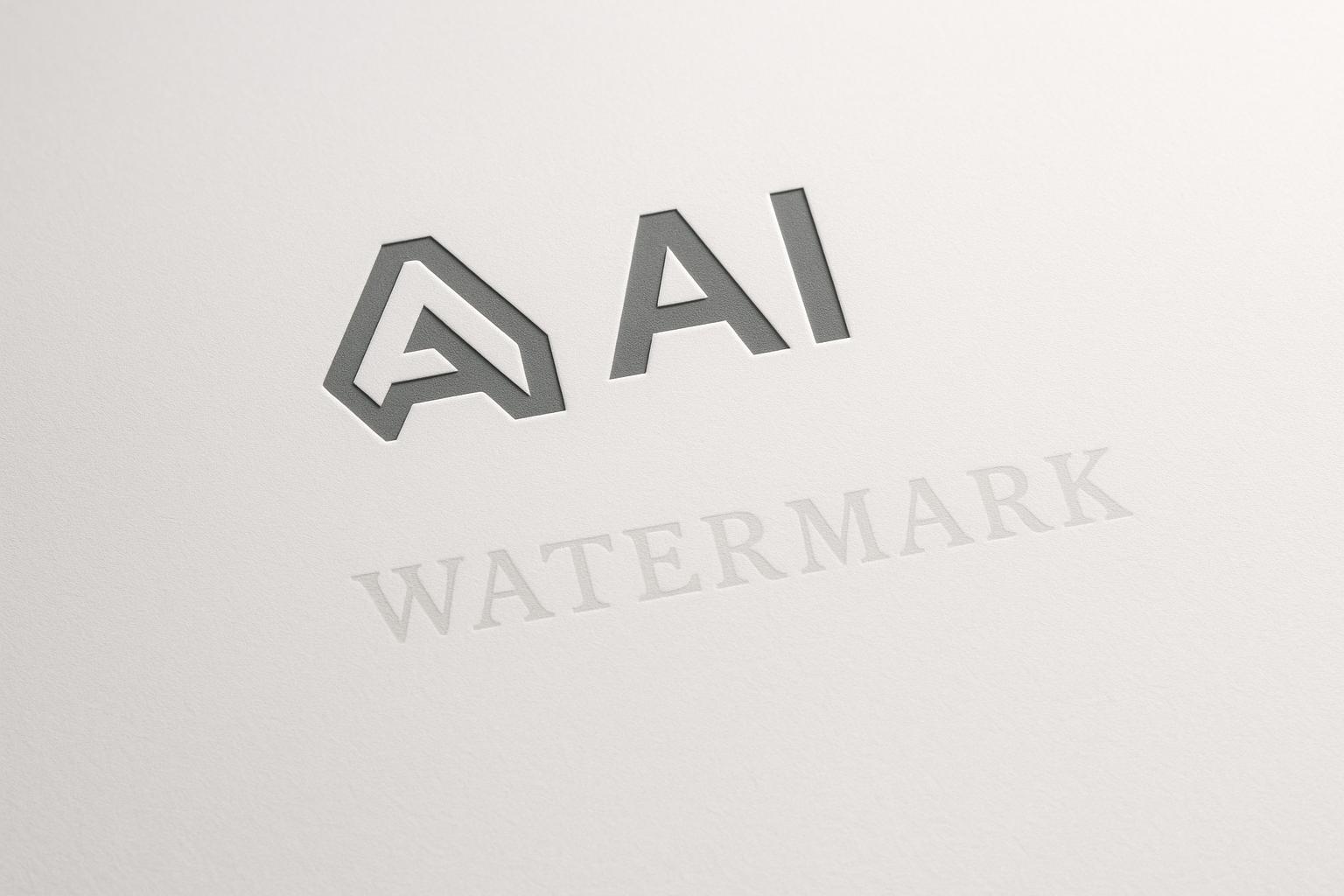Blockchain and standard timestamping methods both aim to prove the timing and integrity of digital assets, but they work very differently. Here’s a quick breakdown:
- Blockchain Timestamping: Uses a decentralized network to create tamper-proof records. It’s secure, transparent, and long-lasting but can be slower and more expensive.
- Standard Timestamping: Relies on centralized authorities, offering faster processing and scalability but with potential risks like single points of failure and less transparency.
Quick Comparison
| Feature | Blockchain Timestamping | Standard Timestamping |
|---|---|---|
| Security | Decentralized, tamper-proof | Centralized, vulnerable to single failure |
| Speed | 10–60 minutes (or faster with some systems) | Milliseconds to seconds |
| Cost | Variable network fees | Fixed service fees |
| Legal Recognition | Gaining recognition in courts | Long-established |
| Scalability | Limited by blockchain network capacity | Handles high volumes easily |
Key Takeaway
If you need top-tier security and transparency, blockchain may be the way to go. For speed and scalability, standard methods are more practical. Hybrid systems, like ScoreDetect, combine the strengths of both for the best of both worlds.
1243: Blockchain Timestamping and Authenticate Content in the Digital Age with Michael Sumner
Blockchain Timestamping Basics
Blockchain timestamping is a method used to verify the ownership and authenticity of digital content. Unlike traditional methods, it eliminates the need for a trusted third party, relying instead on a decentralized network to create rapid and verifiable records.
How Blockchain Timestamping Works
When you need to timestamp a document or file, the system creates a unique cryptographic hash based on its content. This hash is then recorded on the blockchain as part of a transaction.
To handle multiple timestamps efficiently, the system uses Merkle trees. These organize multiple hashes into a single, compact hash, making verification both quick and effective. Here’s why this approach stands out:
| Benefit | Description |
|---|---|
| Privacy Protection | Only the hash of the content is stored, ensuring the actual document remains private. |
| Efficient Verification | Verification requires just the original document and its Merkle path. |
| Cost Efficiency | Multiple timestamps can be grouped into a single blockchain transaction, reducing costs. |
Thanks to these features, blockchain timestamping not only streamlines the process but also enhances security and reliability over time.
Key Advantages of Blockchain Timestamping
- Stronger Security
A decentralized structure ensures an immutable, tamper-proof record. Each timestamp is verified by numerous independent nodes, removing any single point of failure. - Transparent and Independent Verification
Anyone can verify timestamps without needing a central authority. This builds trust while keeping the original document private. - Long-Term Reliability
Blockchain’s distributed nature ensures timestamp integrity, even across thousands of nodes worldwide. If current cryptographic hash functions were to become vulnerable, blockchain timestamps would still confirm that a document existed before any such vulnerabilities were discovered [1].
"With ScoreDetect, I can take pictures for my travel blog and be confident that nobody will claim them as theirs. I can always prove that I am the author." – Kyrylo Silin, SaaS Founder, CEO [1]
Modern blockchain systems can process timestamps in as little as 3.465 seconds [1]. Since only cryptographic hashes are stored, timestamps remain valid even if the file format changes, making them a reliable solution as technology evolves.
For organizations dealing with sensitive information, blockchain timestamping strikes the perfect balance between security and accessibility. It allows public verification while ensuring content remains confidential – an invaluable tool for industries like digital media, software development, and academic research.
Standard Timestamping Methods
Traditional timestamping relies on centralized authorities and digital infrastructure to confirm the timing of content. These systems play a critical role in supporting many essential business operations.
Standard Timestamp Process
Standard timestamping involves the use of Timestamping Authorities (TSAs) and Public Key Infrastructure (PKI) systems. Together, they ensure document verification and accurate timing. Here’s how the process works:
| Step | Action | Purpose |
|---|---|---|
| Document Submission | User sends the document or its cryptographic hash to the TSA | Begins the verification process |
| Token Generation | TSA combines the hash with the current time | Creates a unique identifier |
| Digital Signing | TSA signs the combined data with its private key | Confirms authenticity |
| Token Return | TSA provides the signed token as proof of verification | Serves as evidence of verification |
The PKI framework plays a key role by managing the digital certificates and cryptographic keys required for this process. Certificates issued by trusted Certificate Authorities (CAs) allow anyone to verify the TSA’s digital signature using the corresponding public key.
Standard Timestamp Constraints
Despite its widespread use, traditional timestamping comes with a set of challenges that can affect its reliability and efficiency:
- Single Point of Failure
TSAs operate as centralized entities, which makes them vulnerable. If a TSA experiences downtime or a security breach, the entire timestamping service may be disrupted. This can lead to delays in verification and service interruptions. - Complex Certificate Management
Managing digital certificates is no small task. Organizations must regularly handle:- Certificate renewals
- Monitoring for potential issues
- Revocation and updates to ensure security
- Scalability Issues
Traditional systems often struggle to handle large volumes of requests. For example, during peak activity, manual certificate management can create bottlenecks that slow down the entire system. Industries like finance, which require synchronized timestamps for thousands of transactions per second, often find these systems unable to meet performance demands.
For industries such as healthcare, where millions of sensitive documents are processed daily, these constraints highlight the need for combining conventional timestamping with newer, more efficient methods. This opens the door for comparisons with blockchain-based solutions, which offer alternative approaches to security, speed, and legal compliance.
sbb-itb-738ac1e
Comparing Blockchain and Standard Timestamps
Security Comparison
When it comes to security, blockchain’s decentralized structure stands in stark contrast to the centralized framework of traditional timestamping methods. Both systems rely on cryptography, but blockchain takes it a step further by using distributed consensus across a network of nodes.
| Security Feature | Blockchain Timestamping | Traditional Timestamping |
|---|---|---|
| Verification Method | Distributed consensus across thousands of nodes | Single authority verification |
| Tamper Resistance | Nearly impossible to alter once recorded | Dependent on authority’s security |
| Point of Failure Risk | Distributed across the network | Vulnerable to a single point of failure |
| Data Protection | Stores only cryptographic hashes | May require storing actual content |
| Authentication | Two-level (PKI + blockchain) | Single-level PKI |
Blockchain’s decentralized nature significantly reduces the risk of tampering. For example, Vermont’s legal system (12 V.S.A. § 1913) acknowledges blockchain-based records as admissible evidence, showcasing its reliability. While security is a major advantage, other factors like speed and cost also play a role in choosing between these methods.
Speed and Cost Analysis
Traditional timestamping systems are lightning-fast, processing transactions in milliseconds and handling thousands per second. In contrast, blockchain transactions often take 10–60 minutes for confirmation and come with variable fees.
| Metric | Blockchain | Traditional |
|---|---|---|
| Transaction Speed | 10–60 minutes | Milliseconds to seconds |
| Throughput | Limited by consensus mechanism | Thousands per second |
| Cost Structure | Variable network fees | Fixed service fees |
| Scaling Solutions | Often requires batching | Supports direct linear scaling |
While traditional systems dominate in speed and scalability, blockchain compensates with unparalleled security. Many organizations opt for hybrid models that combine the strengths of both, striking a balance between performance and protection. These differences also tie into the evolving legal frameworks that govern timestamping technologies.
Legal Framework
In the U.S., the legal landscape for digital timestamping is evolving to accommodate blockchain technology. States like Arizona, Nevada, and Vermont have already recognized blockchain-based records as legally binding. At the federal level, the E-SIGN Act supports the validity of electronic records, including those generated through blockchain. Meanwhile, traditional timestamping enjoys a long-established legal reputation.
This growing legal acceptance strengthens blockchain’s technical benefits, allowing organizations to leverage its advanced security while retaining the credibility of traditional methods. By combining both approaches, businesses can achieve a solid legal and technical foundation for their timestamping needs.
Combined Timestamping Systems
Hybrid timestamping systems are reshaping digital content protection by blending the reliability of blockchain with the speed of traditional methods. This combination ensures stronger security and efficient operations, making it ideal for modern content verification and protection needs.
ScoreDetect System Overview

ScoreDetect exemplifies this hybrid approach by merging blockchain certification with traditional content management techniques. Its multi-layered process ensures both security and ease of use:
| Feature | Implementation | Benefit |
|---|---|---|
| Content Verification | Blockchain checksum + invisible watermarking | Dual-layer protection |
| Detection System | AI-powered web scraping with 95% success rate | Rapid identification of unauthorized usage |
| Enforcement | Automated takedown notices with 96% success rate | Swift content protection and removal |
| Integration | WordPress plugin + 6,000+ Zapier connections | Seamless workflow automation |
The platform achieves an impressive transaction speed of 3.465 seconds on the SKALE blockchain. This is significantly faster than many traditional blockchain systems, offering real-time protection without compromising security. This speed is particularly advantageous for media companies and content creators who need instant safeguards for their digital assets.
Business Applications
Hybrid timestamping systems, like ScoreDetect, have found applications across various industries, helping businesses secure their digital assets and streamline operations.
- Media and Entertainment
Content creators and publishers rely on ScoreDetect’s WordPress integration to automatically secure new content. The system generates blockchain certificates while embedding invisible watermarks, ensuring comprehensive protection from the moment content is published. - Legal and Professional Services
Law firms and consultancies use the platform’s verification certificates as admissible evidence in legal proceedings. The combination of blockchain timestamps and traditional certification methods strengthens proof of ownership, particularly in intellectual property disputes. - E-commerce and Digital Business
Online retailers safeguard product images and descriptions with automated monitoring. The system’s AI-powered web scraping identifies unauthorized use across the web, while blockchain certificates provide undeniable proof of original ownership. - Academic and Research Institutions
Universities and researchers protect their work, such as research papers and educational materials, using the system. Blockchain ensures tamper-proof records, while traditional methods simplify content management and distribution control.
The integration with tools like Zapier enhances usability, letting organizations create custom workflows. For example, businesses can automate the protection of new content, monitor for infringements, and initiate takedown actions – all with minimal manual effort. This streamlining not only saves time but also maintains a high level of security for digital assets.
Conclusion
Hybrid timestamping solutions combine the unchangeable security of blockchain with the speed and legal compliance of traditional methods. The strengths of blockchain timestamping – such as its unalterable nature, transparency, and decentralized design – are becoming essential for protecting digital assets in today’s world. With U.S. courts increasingly accepting blockchain records as valid evidence, businesses now have a more solid foundation to safeguard their intellectual property.
ScoreDetect showcases the power of hybrid timestamping with impressive results:
- Transaction speeds averaging 3.465 seconds on the SKALE blockchain
- 95% success rate in detecting unauthorized content
- 96% success rate for issuing content takedown notices
- Integration with over 6,000 web applications through Zapier
These figures highlight how hybrid timestamping offers practical, real-world benefits across various industries. By combining fast verification with tamper-proof security, this model addresses the challenges of speed and reliability that many businesses face.
"With ScoreDetect, I can take pictures for my travel blog and be confident that nobody will claim them as theirs. I can always prove that I am the author" [1]
This user feedback illustrates the growing trust in blockchain-based timestamping among creators and businesses alike. Integrated solutions like these are paving the way for the future of digital content protection, offering both strong security and operational ease.
For businesses aiming to protect their digital assets, hybrid timestamping is a comprehensive solution that meets the demands of the modern digital landscape.
FAQs
What are the key benefits of blockchain-based timestamping compared to traditional methods?
Blockchain-based timestamping brings several notable benefits when compared to traditional methods:
- Stronger Security: By leveraging cryptographic hashing, blockchain ensures records are tamper-proof. This means timestamps are secure and practically impossible to alter, safeguarding data integrity.
- Increased Transparency: Transactions are stored on a decentralized ledger, creating an unchangeable and verifiable history. This allows anyone to audit the records with confidence.
- Higher Efficiency: Blockchain eliminates the need for centralized systems or manual processes by automating timestamping. This reduces delays and minimizes the risk of human error.
These qualities make blockchain particularly suitable for industries where precision, security, and trust are non-negotiable in timestamping workflows.
How does ScoreDetect’s hybrid timestamping system improve digital content protection?
ScoreDetect enhances the protection of digital content with a hybrid timestamping system that records a checksum of your work. This method secures copyright protection without requiring storage of the actual digital files.
By integrating blockchain technology, ScoreDetect establishes a tamper-resistant and verifiable record of ownership. This makes it simpler to confirm content authenticity while boosting the security of your digital assets and streamlining their management.
How is the legal system adapting to support blockchain-based timestamping?
The legal system is beginning to embrace blockchain-based timestamping as a trustworthy way to verify ownership, ensure data authenticity, and record time-sensitive information. In fact, many jurisdictions are revising their regulations to accept blockchain records as valid evidence in legal cases, largely due to the technology’s secure and tamper-resistant design.
Take the United States, for instance. States like Delaware and Vermont have already enacted laws that permit blockchain records to be used in court. This shift highlights the increasing confidence in blockchain as a tool to reinforce intellectual property protections and maintain the integrity of critical data.

